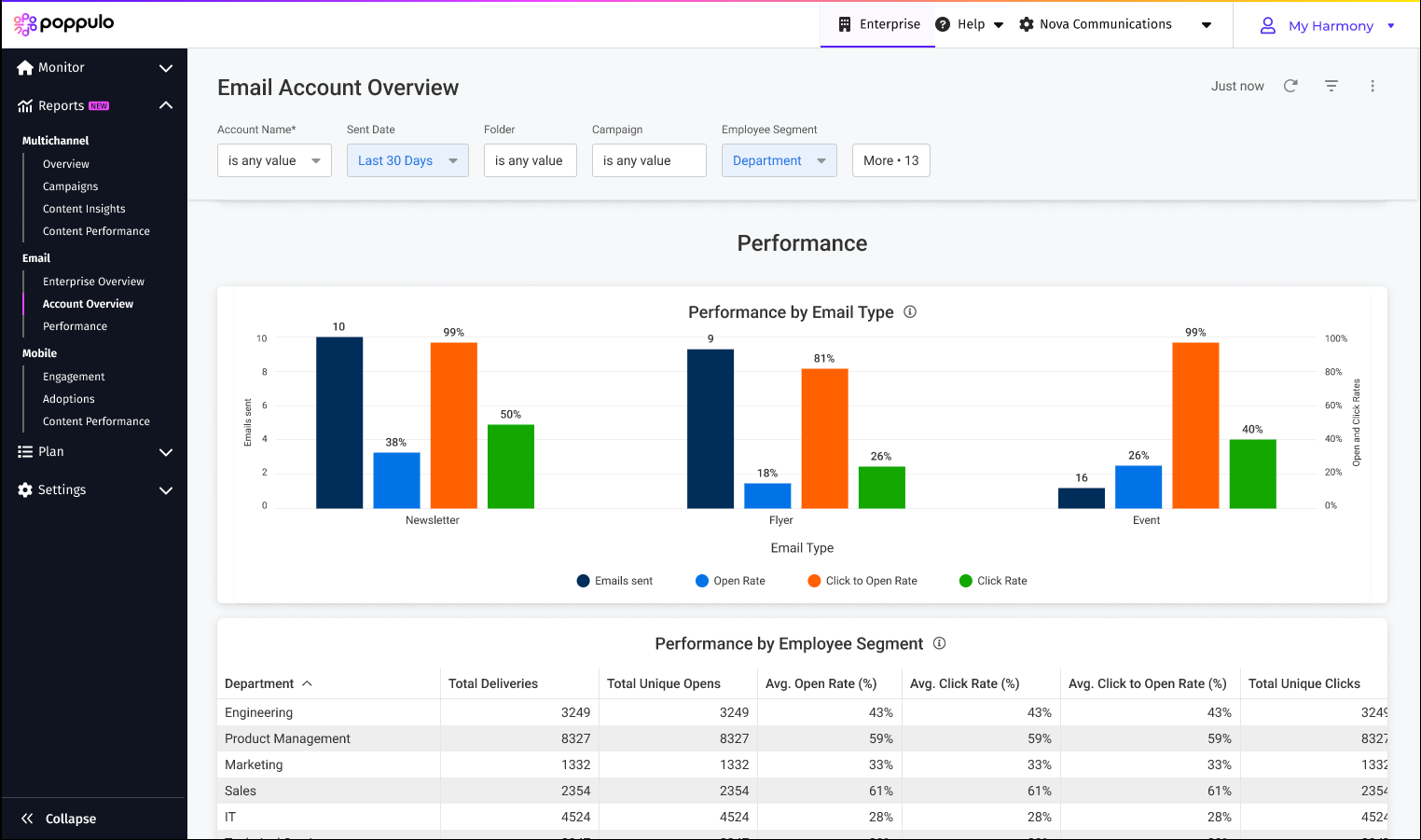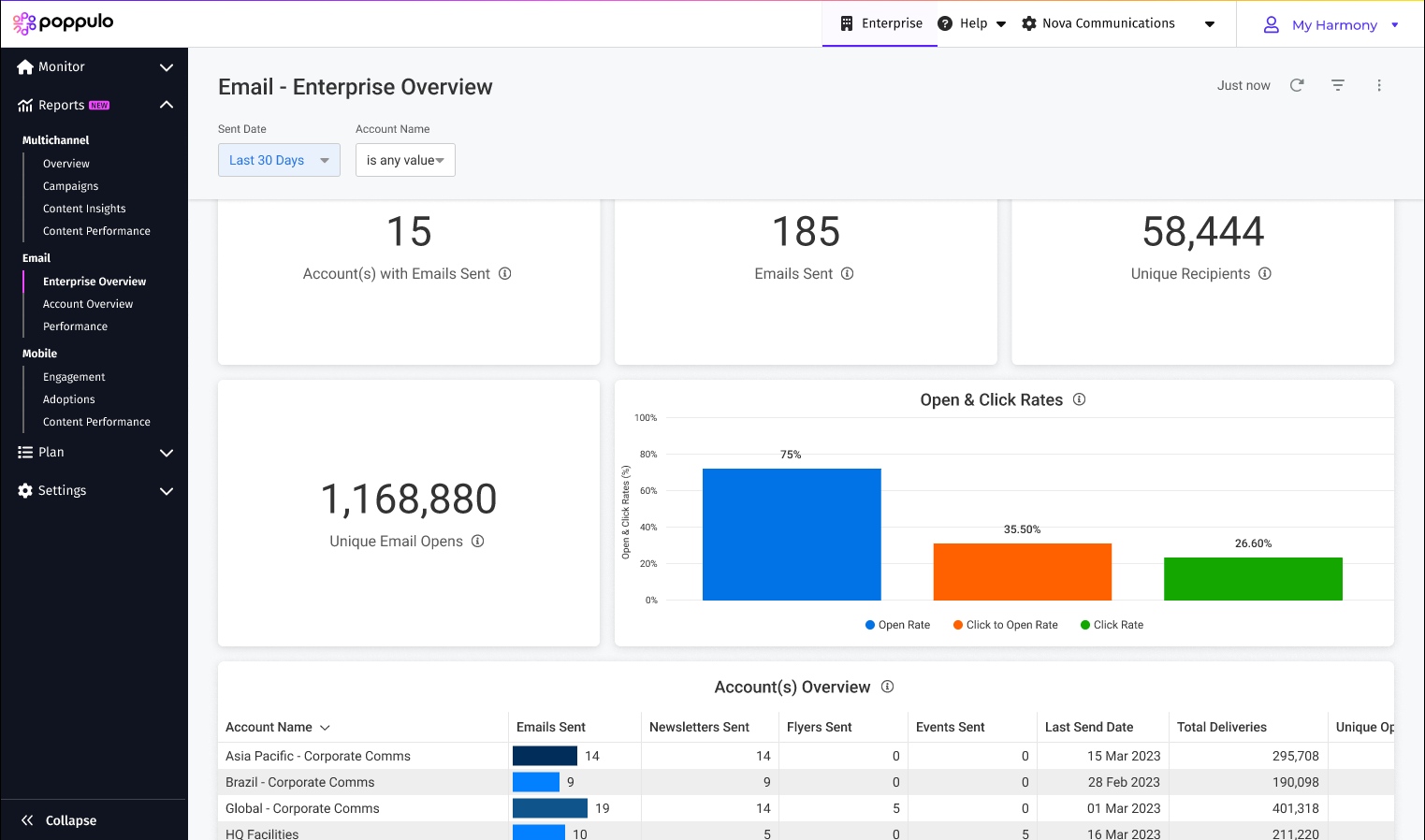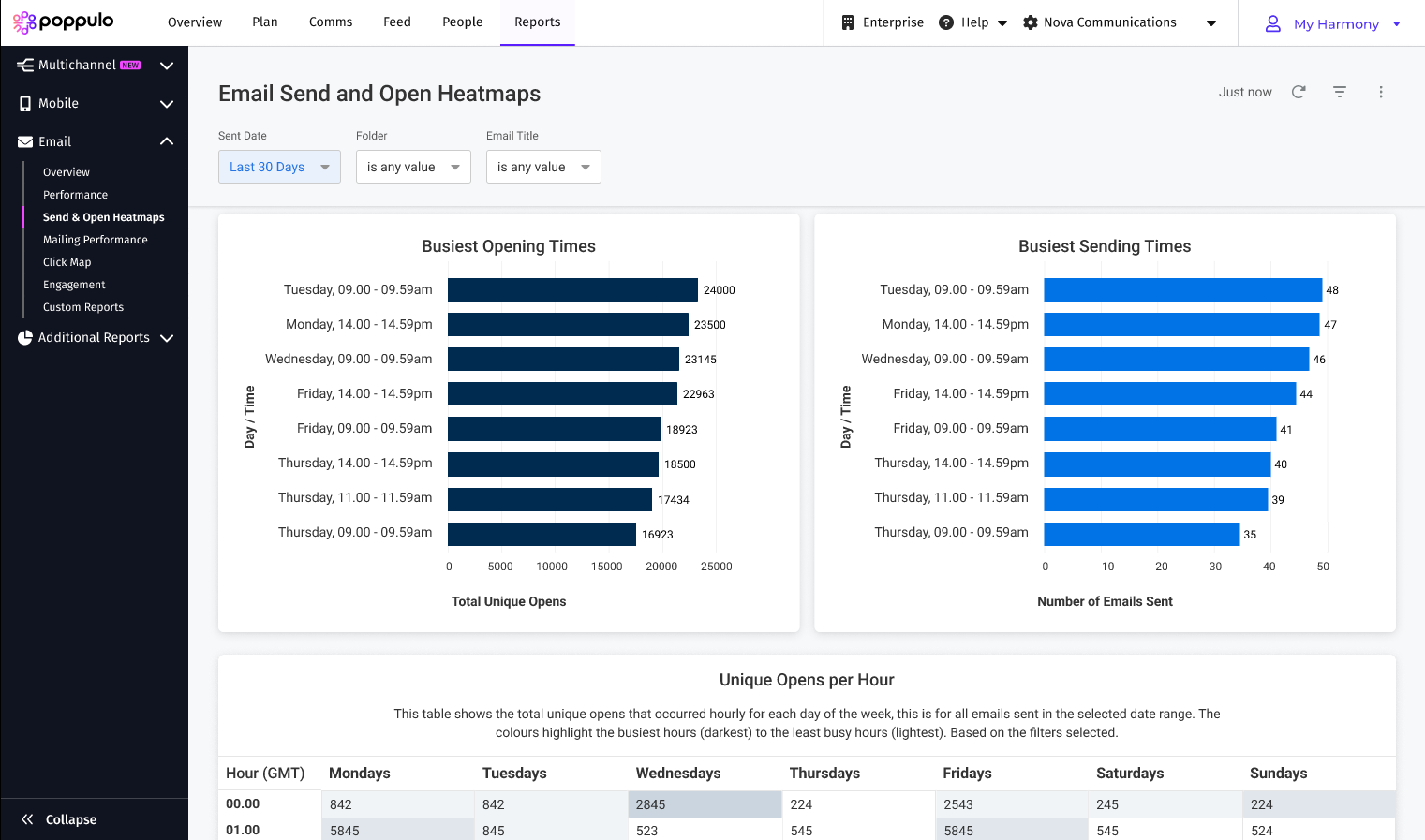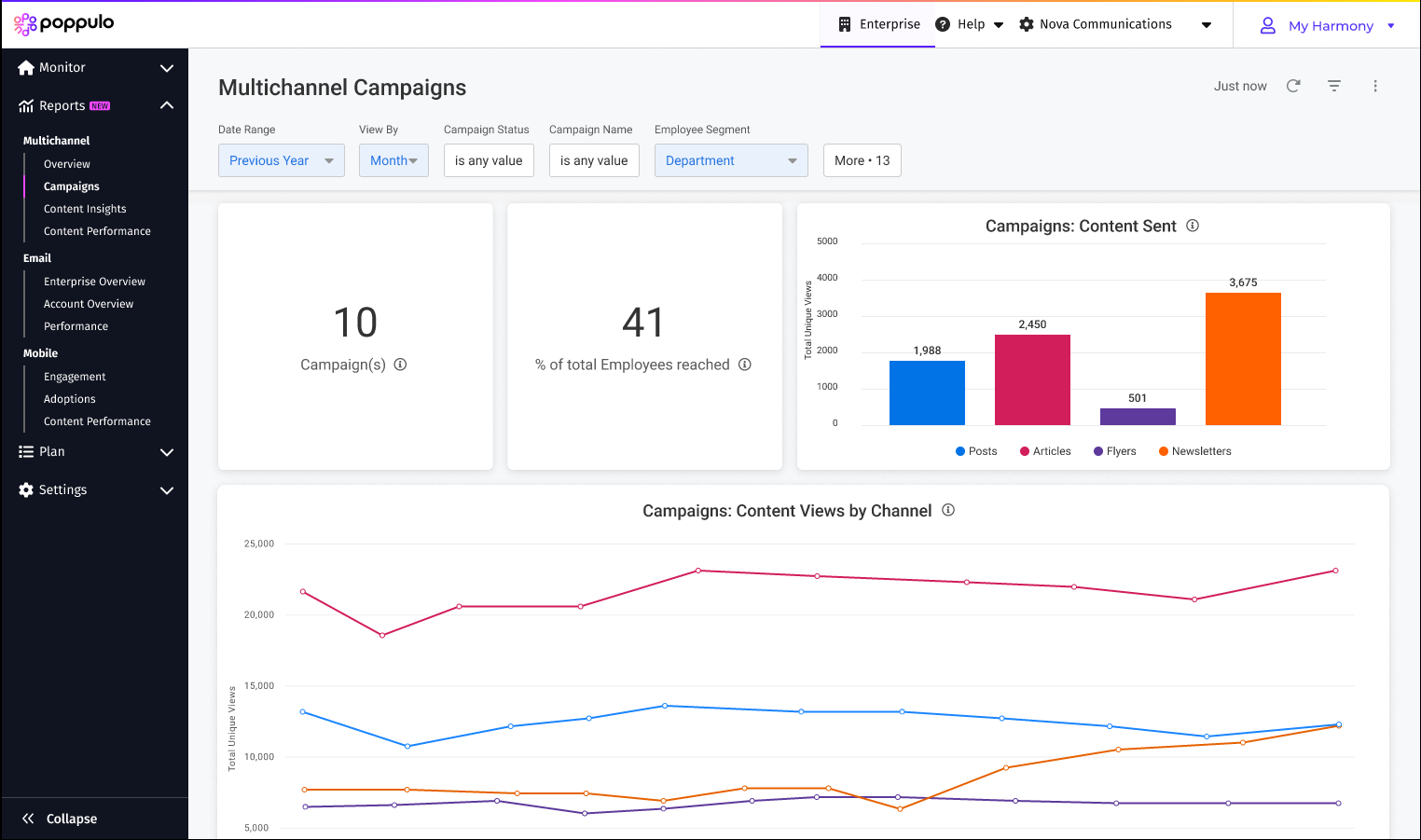— April 4th, 2024
Excellent writing, strong people skills, empathy, openness, and an ability to communicate clearly are just some of the common attributes listed in your typical Internal Communications job advertisement.
But today, it's rare to find a role listed that doesn't extend beyond effective writing and interpersonal finesse. In an era where information inundates every corner of organizational life, merely disseminating information is not enough; organizations demand to know whether communications are truly landing and resonating with their intended audience. And rightly so. Interpreting data to evaluate and improve internal communications and employee engagement is now a "must-do" for all modern communicators.
The Gallagher State of the Sector Report 2023/24 shows that employee understanding improves by 10% when communicators are strategic. Boiled down, strategic communicators measure more than their peers. They can slice and dice data, use it to support their content plans and calendars, and, ultimately, prove their value to the C-suite. The power of advanced analytics, offering real-time visibility and data-driven results, serves as indisputable evidence of the efficacy of Internal Communications.
However, the true significance of advanced analytics extends beyond mere validation; it forms the bedrock for transformative outcomes within organizational settings. Better measurement practices pave the way for better performance, bolstering the narrative of Internal Communications value and return on investment (ROI) to the broader business. By quantifying the impact of Internal Communications initiatives, organizations can unlock budgetary allocations and cement the role of Internal Communications as a strategic business function that directly contributes to overarching business goals.
Here are six ways to mature your measurement practices beyond superficial metrics and elevate the efficacy of IC efforts.
1. Compare Performance Across Employee Segments to Uncover Engagement Challenges
Understanding the nuances of employee segments is the best starting point for establishing meaningful engagement. Robust segmentation involves categorizing employees based on various demographics, roles, departments, work styles, or other characteristics.
Being equipped to compare performance across employee segments through a measurement tool offers invaluable insights into uncovering engagement challenges within an organization. By systematically analyzing data metrics such as open rates, click-through rates, and feedback responses across different segments, communicators understand how communication strategies resonate within diverse groups.

Facilitating Targeted Interventions
Discrepancies in engagement levels among these various segments highlight any potential communication gaps or barriers that may hinder effective engagement. This kind of granular analysis enables organizations to pinpoint specific areas for improvement and tailor communication strategies to better address each segment's unique needs and preferences.
Let's say the internal communications team notices lower engagement levels in the IT department than the sales team. Instead of sending one generic email, they produce the usual newsletter plus gamified sales challenges to Sales and introduce a more specialized technical newsletter for IT. Both engagement metrics improve, evidenced by increased participation in feedback surveys and higher click-through rates. Through segment-specific adjustments, the team successfully addresses the engagement gap.
Ultimately, the ability to compare performance across employee segments facilitates targeted interventions and strategic adjustments, leading to stronger employee engagement and a more cohesive organizational culture.
2. Connect Comms with Business Goals by Tracking Calls to Action
CTAs are specific directives embedded within communications, prompting recipients to take a desired action, whether it's clicking on a link, completing a survey, or attending a meeting. By tracking CTAs, communicators gain invaluable insights into the effectiveness of their messaging and the level of audience engagement.
Gauging Effectiveness and Planning Retargeting
Call-to-action tracking involves monitoring and analyzing recipient interactions with communications to gauge effectiveness and refine targeting strategies. Using analytics tools, communicators can precisely identify who engaged with CTAs and who did not, enabling them to tailor subsequent communications for maximum impact.
Retargeting efforts can be personalized based on the recipient's previous interactions and preferences, making the follow-up communication more relevant and compelling. It allows communicators to nurture engagement and guide employees through the desired action pathway, ultimately increasing the likelihood of achieving the intended outcomes, such as higher participation rates in training sessions, surveys, or company initiatives.
For example, suppose an internal communications team sends out a company-wide email announcing an upcoming training session and includes a CTA prompting employees to register their attendance. Through CTA tracking, they identify a group of employees who opened the email but did not register for the training. Retargeting could involve sending a follow-up email to this specific group, emphasizing the importance or benefits of attending the training session, and providing a direct link or even an incentive for registration.
Refining Strategies for Driving Engagement and Effectiveness
Understanding the correlation between CTAs and desired outcomes enables communicators to craft more compelling calls to action that directly contribute to achieving organizational goals. Ultimately, by tracking CTAs, communicators can connect communications with business objectives, enhance the effectiveness of their messaging, improve employee engagement, and better align communication efforts with overall business goals.
3. Go Wide and Deep to Understand How Your Strategy Lands Across Your Enterprise and Locally
Sub-account reporting refers to analyzing communication performance within different geographical regions or sub-groups within an organization. This approach allows communicators to get into the complexities and intricacies of content reception and delivery structures across various locations.
Understanding Communication Dynamics Across Different Geographical Locations
Sub-account reporting offers a multifaceted view of communication dynamics, particularly across disparate geographical locations. Connecting with employees within your local geographic area is one challenge, but navigating diverse languages, values, and cultures presents an entirely different dynamic!
For instance, consider a global company rolling out a new employee engagement initiative across its regional offices. Through sub-account reporting, the internal communications team can assess the initiative's effectiveness in each region by comparing metrics such as engagement rates, feedback responses, and participation levels in related activities. They may find that while the initiative performs well in one region, it faces challenges in another due to cultural differences or varying levels of accessibility to communication channels. Armed with this insight, the team can tailor their approach for each region, perhaps adjusting messaging tone or delivery methods to better align with local preferences and overcome barriers to engagement.
By leveraging sub-account reporting, organizations can ensure that their communication strategies resonate across the enterprise while accommodating the unique dynamics of each geographical location.

4. Harness AI to Discover Next-Level Insights
Over 50% of communicators believe that AI can guide where, when, and how to deliver comms—and they would be right! AI offers advanced capabilities for analyzing vast amounts of data and extracting actionable insights. AI-powered tools can efficiently process communication data, including content and employee engagement metrics, to uncover new patterns and trends.
The Role of Artificial Intelligence in Analyzing and Optimizing IC Strategies
AI can employ natural language processing (NLP) algorithms to identify contextual themes within communication content, providing communicators with valuable information about the topics that resonate most with employees. Additionally, AI enables predictive analytics, allowing organizations to proactively anticipate communication needs and optimize strategies. AI empowers communicators to make data-driven decisions, enhance message relevance, and refine communication strategies for maximum impact.
AI-Powered Insights for Smarter Decision-Making and Improved Engagement
Having these kinds of insights at your fingertips is invaluable and results in smarter decision-making and improved engagement outcomes. For instance, let's consider a scenario where a large corporation is implementing a new remote work policy. The IC team uses AI algorithms to analyze their communications across departments. The AI identifies engagement spikes with particular themes, such as culture, technology, and HR policies. By having these insights at their fingertips, HR and management teams gain a clear understanding of the primary topics on employees' minds regarding the new policy. This allows them to tailor their communications and support strategies accordingly, addressing specific concerns and ensuring smoother implementation of the remote work policy.

5. Assess Send and Open Times to Find the Ideal Engagement Window
At this stage, you know what to send and to whom, but when is the perfect time to send it? We all know that timing can make or break a comms campaign. Tracking email sends and opens per hour offers valuable insights into determining the most effective communication windows for maximizing engagement. This real-time pulse allows communicators to identify peak periods of activity when employees are most likely to engage with content. By analyzing trends in email interaction over time, organizations can pinpoint optimal send windows that align with employees' schedules and preferences, ensuring the right messages reach their audience at the right moment for maximum impact.
Real-Time Pulse for Maximum Impact
Let's imagine an internal comms team within a large company that regularly sends out newsletters to employees. By tracking email sends and opens per hour over several weeks, they notice a consistent trend: emails sent during the late morning hours receive the highest open rates and engagement levels. Additionally, they analyze which team members' emails tend to perform best and which types of content formats resonate most with employees. Armed with this data, the team strategically adjusts their email send times to align with the identified peak engagement window and increases the inclusion of video content from leadership. This leads to a surge in readership, elevated click-through rates, and enhanced overall engagement with their internal newsletters.

6. Tracking and Measuring Holistic Campaigns to Optimize and Assess Impact
Analyzing metrics and data points across all your different channels and touchpoints empowers you to understand the overall performance and effectiveness of a campaign. Essentially, you are answering the question, "Are my critical comms reaching employees and employees taking desired actions?" The goal is to optimize the campaign by identifying areas of improvement and assessing its impact on the intended audience or objectives. It encompasses a thorough evaluation of all aspects of the campaign to ensure it aligns with organizational goals and delivers the desired results.
Measure All Your Channels in One Place to Refine Your Channel and Content Approach
Consolidating the measurement of all communication channels into a single platform provides comprehensive insights essential for refining channel and content strategies. By centralizing data collection, communicators gain a holistic view of campaign performance, allowing for informed decision-making and strategic adjustments. This approach enables organizations to identify high-performing channels, understand audience preferences, and refine content delivery methods to maximize impact and engagement across all communication platforms.
Let's say an internal communications team launches a campaign to improve employee engagement within a company undergoing significant organizational changes. The holistic campaign includes a mix of communication channels, such as company-wide emails, town hall events, mobile push notifications, and in-office digital signage. The internal comms team aggregates all data into a centralized analytics platform to track and measure the campaign's impact.
Doing so gives them a comprehensive view of how each communication channel contributes to the overall campaign's success. They can analyze reach and engagement metrics for email, mobile, and other touch points side by side, allowing them to identify which channels are most effective in conveying key messages and engaging employees.
For example, they notice that email open rates are higher when the subject line explicitly mentions upcoming changes, indicating employees' interest in staying informed. They also observe increased engagement on mobile app articles that explain the changes and their impact on employees.
The internal comms team can use these insights to refine their communication strategy, focusing on channels and messaging that resonate most with employees. This will ultimately lead to improved engagement and smoother navigation through organizational transitions.

Conclusion
The Gallagher State of the Sector Report 2023/24 reveals a stark contrast in the use of measurement between strategic and non-strategic communicators. Only 27% of the latter leverage measurement to influence leadership compared to 47% of their strategic counterparts.
For organizations striving to gauge the impact of their internal communications and make informed, data-driven decisions that bolster business objectives, Poppulo's advanced analytics offer a transformative solution. By providing insights into employee engagement, benchmarking performance, and pinpointing areas for improvement, Poppulo empowers communicators to align organizational efforts effectively and keep leadership informed on key metrics, going way beyond the limitations of manual reporting approaches.
Advanced analytics insights empower communicators to refine their communication strategies, optimize engagement, and keep pace with evolving organizational needs. By quantifying the effectiveness of their efforts and making data-driven decisions, communicators position themselves as indispensable assets in achieving organizational goals. Embracing advanced analytics is not just a trend but a necessity for communicators seeking to thrive in today's dynamic, competitive business landscape.
Experience the power of advanced analytics with Poppulo—contact us today.
